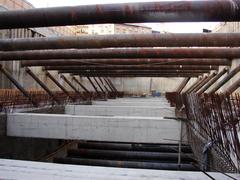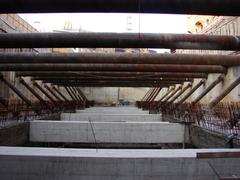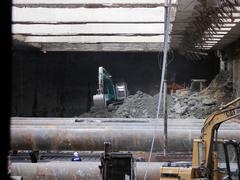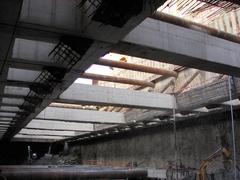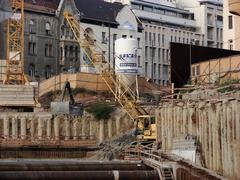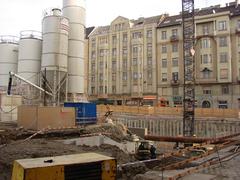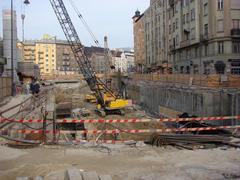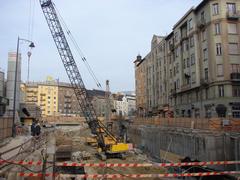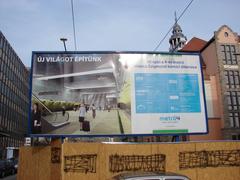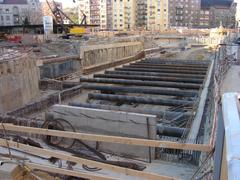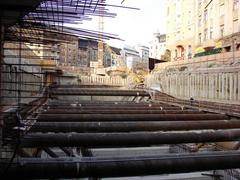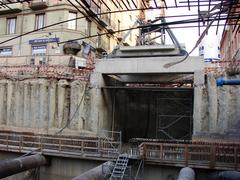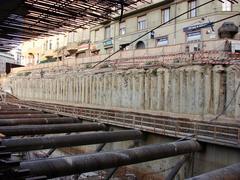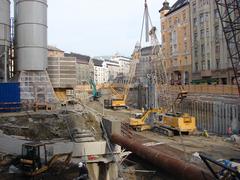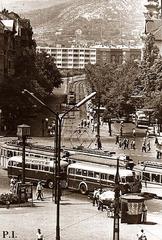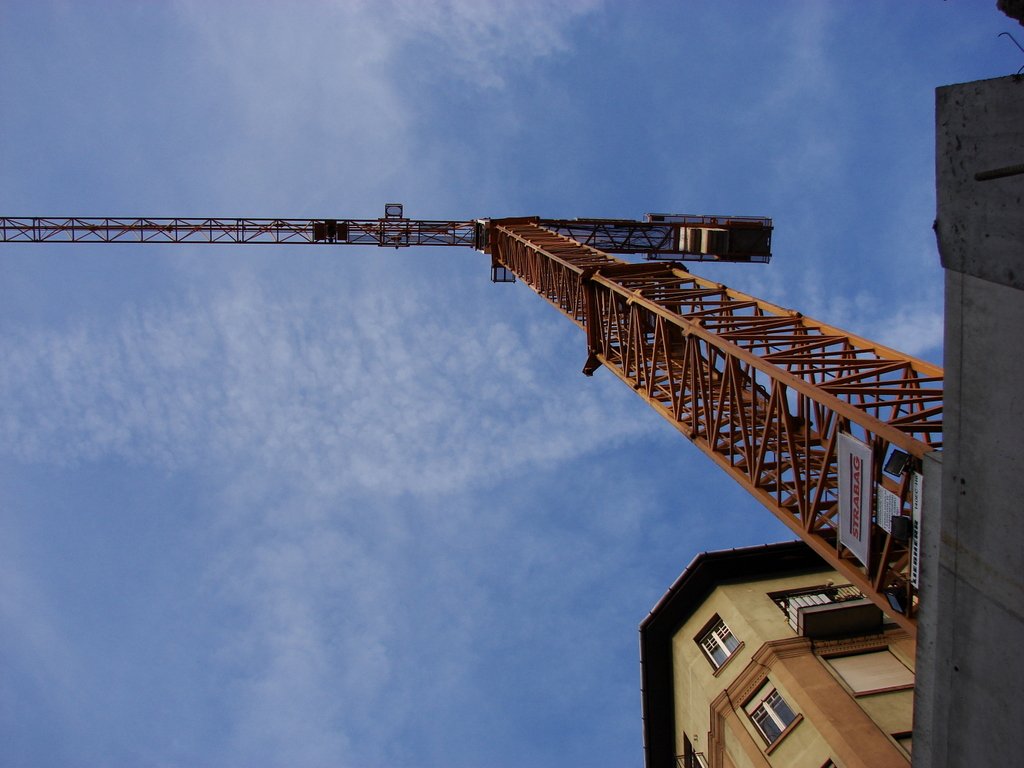
Móricz Zsigmond Körtér Visiting Hours, Tickets, and Budapest Historical Sites Guide
Date: 14/06/2025
Introduction
Móricz Zsigmond Körtér, located in the heart of Budapest’s Újbuda district on the Buda side, is a vibrant urban square and a major transportation hub. The square is celebrated for its seamless blend of historical significance, modernist architecture—most notably the iconic Gomba Pavilion—and a lively, creative cultural scene. As a gateway to important districts and attractions, it offers travelers easy access to both the city’s heritage and contemporary lifestyle. This guide provides detailed, practical information on visiting hours, ticketing, accessibility, nearby historical sites, and travel tips to help you make the most of your Budapest adventure.
Strategic Urban Role and Transportation Hub
Móricz Zsigmond Körtér is one of Budapest’s principal transport interchanges, connecting Bartók Béla út, Villányi út, Fehérvári út, and Karinthy Frigyes út. The square is serviced by multiple tram lines (4, 6, 19, 47, 49), several bus routes (7, 173, 40, 33), and is the western terminus of Metro Line 4. This exceptional connectivity makes it a key point for both locals and tourists moving between the city center and districts such as Gellért Hill, the Castle District, and Kelenföld (Wikipedia, BudapestCity.org, Hungarian Summit).
Architectural Landmark: The Gomba Pavilion
Centrally located within the square, the Gomba (“Mushroom”) Pavilion is a celebrated example of Hungarian modernist architecture. Built in 1942 as a tram and suburban railway terminus, its circular, ring-shaped design and concrete details stand out in Budapest’s architectural landscape (PestBuda, Kitervezte.hu). After decades of changing use and eventual decline, the Gomba was restored between 2012 and 2014, transforming it into a lively café and community space while preserving its heritage features (Hetedik.hu). Today, the Gomba serves as a symbol of Újbuda’s urban renewal and is open daily, typically from 8:00 AM to 10:00 PM.
Cultural and Social Life
Móricz Zsigmond Körtér is much more than a transit point—it is the nucleus of a thriving, creative neighborhood. Adjacent Bartók Béla Boulevard, known as Budapest’s “cultural boulevard,” is lined with art galleries, independent bookstores, specialty cafés, and bistros. This area has become a beloved gathering place for artists, students, and visitors seeking a distinctly bohemian atmosphere (WeLoveBudapest). Venues like Hadik Café, Szatyor Bár, and Kelet Café are local institutions, while new eateries and bars continually add to the district’s eclectic flavor.
The square regularly hosts seasonal events, open-air concerts, artisan markets, and pop-ups such as the Makers’ Market Budapest. These events showcase local designers, crafts, and gastronomy, contributing to the area’s lively street culture (WeLoveBudapest).
Public Art and Urban Design
The square is home to the bronze statue of Zsigmond Móricz, a celebrated Hungarian writer, and features innovative urban furniture and landscaping. The recent redesign prioritized pedestrian accessibility, green spaces, and public seating, with features such as heated benches, wide walkways, and contemporary lighting. Oversized flower pots, murals, and community-driven art installations further enhance the square’s visual appeal and sense of place (BudapestCity.org, WeLoveBudapest).
Practical Visitor Information
Visiting Hours:
- The square and its outdoor features are accessible 24/7, year-round.
- The Gomba Pavilion and surrounding businesses generally operate from 8:00 AM to 10:00 PM, but hours may vary by establishment.
Tickets:
- There is no admission fee for the square or the Gomba Pavilion’s public spaces.
- Public transport tickets are required for trams, buses, and metro lines serving the area.
- Special events or exhibitions may require separate tickets—check official event pages or venue websites for details.
Accessibility:
- The square and Metro Line 4 station are wheelchair accessible, with ramps and elevators.
- Wide, smooth walkways accommodate strollers and mobility aids.
- Public transport vehicles serving the area are mostly accessible.
Travel Tips:
- Peak hours are 7:00–9:00 AM and 4:00–6:00 PM; for a quieter visit, explore mid-morning or early afternoon.
- Feneketlen Lake, a tranquil urban park, lies just minutes south of the square for a relaxing break.
Getting There
- Metro: Metro Line 4 (M4), terminus at Móricz Zsigmond Körtér.
- Trams: Lines 4, 6, 19, 47, 49.
- Buses: Lines 7, 33, 40, 173 and several others.
- Cycling/Walking: Wide sidewalks and bike lanes, plus nearby bike-sharing stations, make the area pedestrian- and cyclist-friendly (WeLoveBudapest).
Nearby Historical and Cultural Sites
- Gellért Hill: Offers panoramic views, the Citadel, and Liberty Statue. Accessible by bus or foot (Frewa Photo).
- Gellért Thermal Baths: Famous Art Nouveau baths for wellness experiences (The Crazy Tourist).
- Buda Castle District: UNESCO World Heritage Site with the Royal Palace, Hungarian National Gallery, and Budapest History Museum (Time Out).
- Central Market Hall: Budapest’s largest indoor food and craft market.
- Bartók Béla Boulevard: Explore art galleries, artisan boutiques, and trendy eateries.
Gastronomy and Local Flavors
The area boasts a rich culinary scene—from classic Hungarian cafés and pastry shops to Asian fusion eateries and creative bistros. Notable spots include Rua Asian Food and More, A Csirkéződ for chicken dishes, and classic bakeries. Pop-up markets offer gourmet treats and local specialties, and Hungary’s renowned húsleves (meat soup) is widely available nearby, especially in winter (WeLoveBudapest).
Shopping and Nightlife
- Vintage Shops: Discover unique retro fashion and sustainable shopping options.
- Artisan Boutiques: Find Hungarian ceramics, design objects, and gifts.
- Bars and Cafés: Bartók Béla Boulevard features laid-back nightlife, craft beers, and live music.
Parks and Outdoor Spaces
- Feneketlen-tó (Bottomless Lake): Leafy park with a tranquil lake, playgrounds, and lakeside cafés.
- Gellért Hill: Ideal for scenic walks, picnics, and sunset views.
Seasonal and Special Events
Look out for annual fairs like Art and Antique Budapest, Budapest Central European Fashion Week, and seasonal open-air music or art events in the square and nearby venues (WeLoveBudapest).
Frequently Asked Questions (FAQ)
Q: What are the visiting hours for Móricz Zsigmond Körtér?
A: The square is open 24/7; the Gomba Pavilion and most cafés are open from 8:00 or 9:00 AM to 10:00 PM.
Q: Is there an entry fee?
A: No, the square and outdoor attractions are free to visit.
Q: How do I get there by public transport?
A: Metro Line 4, tram lines 4, 6, 19, 47, 49, and numerous bus lines all serve the square.
Q: Is the area accessible for people with disabilities?
A: Yes, with ramps, elevators, and accessible public transport.
Q: Are guided tours available?
A: Yes, many walking and cycling tours start from or include Móricz Zsigmond Körtér.
Visuals and Media
For a richer experience, explore interactive maps and virtual tours on local tourism websites. High-resolution images of the Gomba Pavilion, street art, and surrounding architecture are widely available. For accessibility and SEO, use descriptive alt text such as “Móricz Zsigmond Körtér Gomba Pavilion at sunset” or “Budapest historical sites near Móricz Zsigmond Körtér.”
Summary and Recommendations
Móricz Zsigmond Körtér is a vibrant urban square that blends Budapest’s modern energy with historical charm. Its accessibility, central location, cultural richness, and welcoming atmosphere make it a must-visit for architecture lovers, foodies, and anyone eager to experience authentic Budapest life. Start your exploration at the Gomba Pavilion, stroll Bartók Béla Boulevard, and connect with both the city’s past and its creative present.
Stay updated on local events and guided tours by following official tourism resources and downloading the Audiala app for curated urban guides.

